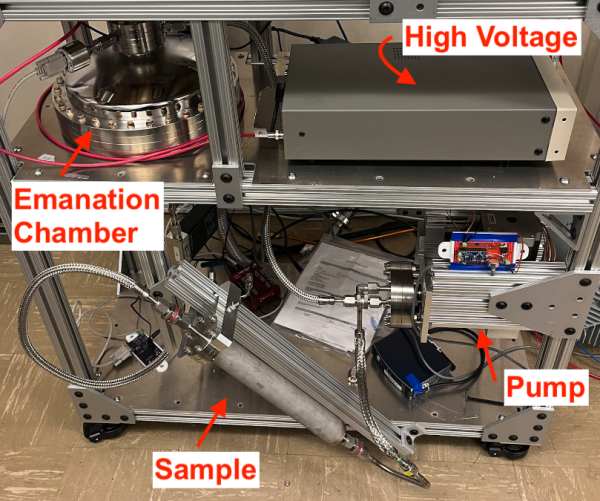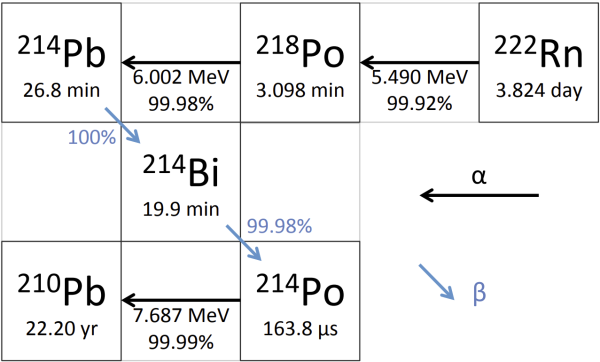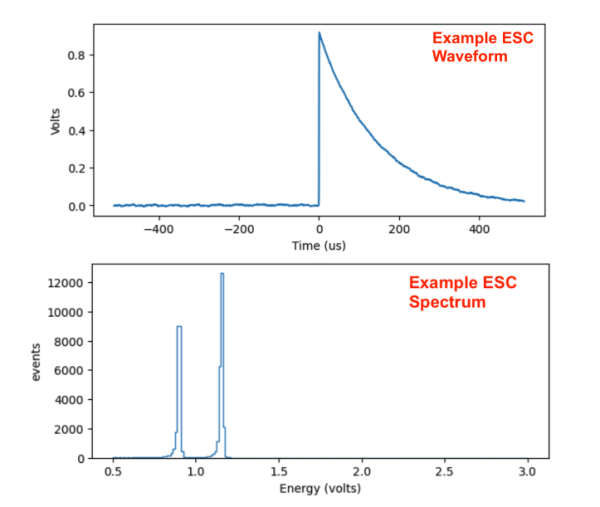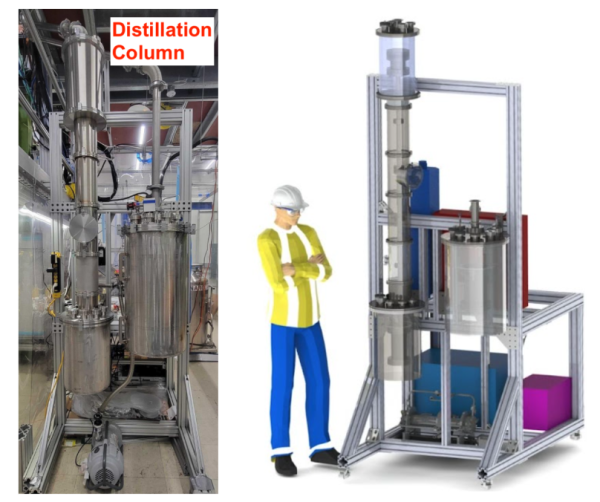Background Control
Our group works on background mitigation strategies for the nEXO experiment. The sensitivity estimates for the nEXO detector are based on our best estimate of the background quantities for each subsystem. In particular, half of the background in nEXO is expected to come from radon (Rn), which outgasses from parts in the xenon system. 222Rn decay daughters will plate out onto biased surfaces in the detector and can produce radioactivity with a similar energy signature to neutrinoless double beta (0vBB) decay. Therefore selecting low 222Rn outgassing materials is crucial for the success of the experiment. The sensitivity of nEXO to 0vBB can be further improved by the reduction of radon so we are also investigating ways to remove it with xenon distillation.
Electrostatic Counters
All materials that will be in contact with the liquid xenon need to be screened for radon emanation. At SLAC, electrostatic counters (ESCs) are used to do this screening. The material is plumbed into the gas tight system filled with a inert carrier gas, and a gas pump circulates the outgassed radon throughout the closed loop. When 222Rn decays in the emanation chamber it usually makes an ionized daughter that is drifted by an electrostatic field to a silicon photodiode. This diode can measure the energy of subsequent alpha decays in the decay series (218Po and 214Po) using our open source electronics board. The rate of these signals tell us the rate of 222Rn outgassing in the system.


We are working towards improving our ESC system, scaling up our radon assay program, and refining our data analysis techniques.

Distillation Column
Radon-222 emanating from parts in the nEXO detector would uniformly mix with the liquid xenon over its 3-4 day half-life. Our group works on the research and development of a cryogenic distillation column to separate radon from xenon in-line. This prototype distillation column is being constructed to define design parameters of such a radon-suppression device that could be added to the current nEXO design.

